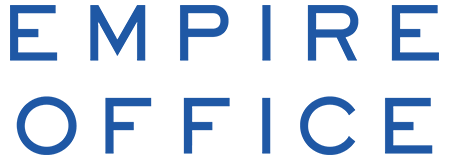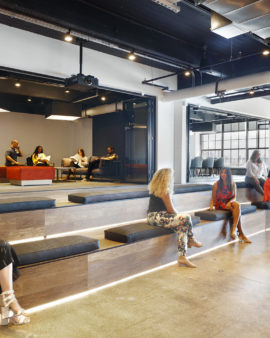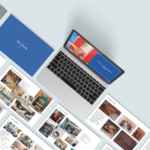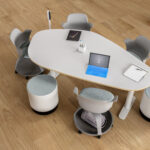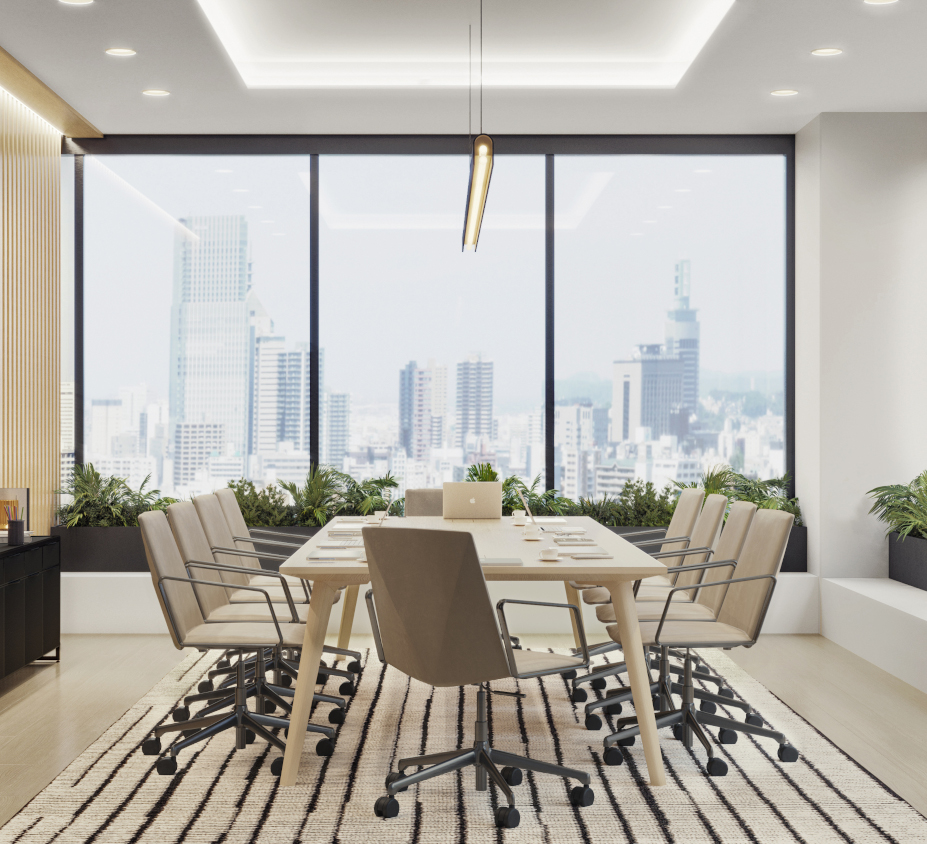Training for Excellence
Training rooms in corporate workplaces can look very different. Seeing what solutions others have been successful in implementing can help in planning what’s right for your space and corporate culture.
First, we’ll look at what driving the need for change is across organizations.
- GENERATION Z ENTERING THE WORKPLACE
61 million gen zers will enter the workforce in the coming years. This generation values workplace atmosphere and job fluidity (75% of gen zers expressed interest in learning and inhabiting numerous roles within a company). - HEIGHTENED COMPETITION FOR TALENT
Competing with tech companies to attract/retain talent, companies are using space and offering continuous education as an engagement and recruiting tool. - IMPORTANCE PLACED ON KNOWLEDGE TRANSFER BETWEEN WORKERS
With baby boomers retiring and the newer generations of workers coming into the workplace, knowledge transfer is crucial. Mentoring and reverse mentoring can help companies facing this transition spark continuous innovation. - TECHNOLOGY TO ENHANCE EXPERIENCE
Technology in the workplace is not new, but major innovations have been developed in recent years that make the idea of “plug and play” more tangible than ever.
In our exploration, we found the way our corporate clients are implementing training rooms and team project spaces varies depending on the company and the type of work they specialize in.
Some lean more towards a hands-on maker space, others need solutions for viewing digital media, and some favor more discussion and lecture-based learning. Some are more casual and others more formal—reflecting the uniqueness of their corporate cultures.
Our education clients are incorporating new strategies and solutions to better support today’s way of learning as well as to better equip students entering the workplace.
What we see:
FLEXIBILITY
- Fluid spaces to fit the need at-hand
- Easily accommodate a large group or more intimate group setting
- Mobile and movable solutions are key elements
COLLABORATIVE LEARNING
- Break-out areas for small group collaborations
- Social spaces for impromptu learning/mentoring opportunities
TIERED SEATING
- An idea taken straight from the classroom, tiered seating offers optimum viewing and engagement potential for rows of participants
OPEN, MULTI-PURPOSE SPACES
- Open space that can easily be converted to a large gathering space when needed.
- Stadium seating is a common element in these spaces.
PERMANENT, FIXED SPACES
- When a dedicated space for trainings is needed, a more sophisticated, built-in solution can be implemented.
Many of our manufacturer partners put a great deal of resources behind research on this topic. Steelcase Education, for one, has invested a great deal in researching the parallels between higher education classroom learning environments and corporate learning environments.
Entire product lines have been introduced that reflect their deep understanding on the matter of training and education whether that takes place in the classroom or the workplace.
- The Steelcase Flex Collection empowers teams to create spaces that can be rearranged on demand, creating environments teams and individuals need to do their best work.
- Verb is an integrated collection of classroom furniture including tables, whiteboards, and instructor stations designed to support a full range of teaching and learning styles.
- PolyVision CeramicSteel surfaces are used for whiteboards, chalkboards and an array of architectural applications.
- Steelcase and Microsoft work together with a shared commitment to put people at the center of how place and technology intersect and empower individuals and teams to do their best work.
More information on any of the above products can be seen at: www.steelcase.com. For a full listing of our manufacturer partners, please download our full line list here.
